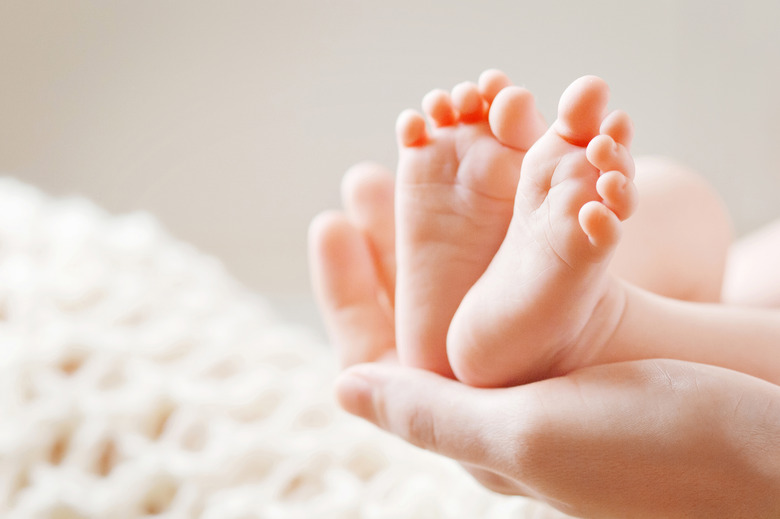What Happens If A Child Is Born With An Extra Chromosome In The 23rd Pair?
The human genome is made up of a total of 23 chromosomes: 22 autosomes, which occur in matched pairs, and 1 set of sex chromosomes. Sex chromosomes determine your gender and can be matching or not. Women get two copies of the X-chromosome, but men get one copy of the X-chromosome and one copy of the Y-chromosome. When a baby is born with more than two sex chromosomes, it has one of three syndromes.
TL;DR (Too Long; Didn't Read)
If a child has an extra chromosome, it may cause different types of medical conditions such as triple X syndrome, Klinefelter syndrome or Jacob's syndrome.
Chromosomal Trisomy
Chromosomal Trisomy
Trisomies happen when a person gets an extra chromosome. The most common trisomy in humans is trisomy 21, or Down syndrome, where the person has three copies of the twenty-first chromosome. Sex cells divide so that they only have half the normal genetic information. When there is an error in this division, an egg or sperm cell may end up with an extra chromosome. Most trisomies are lethal and cause spontaneous abortions or stillbriths, and those babies that survive are born with birth defects. But people with sex-chromosome trisomies can have relatively mild symptoms.
Triple X Syndrome
Triple X Syndrome
Triple X syndrome, as the name implies, happens when a baby gets three copies of the X-chromosome, affecting 1 in 1,000 girls. The effects of triple X syndrome can ranges from mild to severe and include learning disabilities, developmental delays and weak muscle tone. Other complications that are more common in girls and women with the syndrome are seizures, kidney disease, scoliosis and psychotic disorders. The stress of being different often leads to low self-esteem and behavioral problems. Most women with triple X syndrome are able to function in society and can bear children.
Klinefelter Syndrome
Klinefelter Syndrome
People with Klinefelter syndrome get two copies of the X-chromosome and one copy of the Y-chromosome. They are male, but develop some breast tissue and have less hair and a less muscular body than normal men. The condition is uncommon, but not rare, affecting between 1 in 500 and 1 in 1,000 men. Most men with Klinefelter syndrome are sterile because they are unable to produce sperm. Along with the altered physical characteristics, men with Klinefelter syndrome are also more likely to have learning disabilities.
Jacob’s Syndrome
Jacob's Syndrome
Jacob's syndrome occurs when babies have one X-chromosome and two Y-chromosomes. It affects 1 in 1,000 boys and men. Men with Jacob's syndrome are physically normal except for a tendency to be very tall and to have severe acne during puberty. Learning disorders, reduced IQ and some problems with behavior and impulsiveness are common. These men were once thought to be overly aggressive and lacking in empathy, but most have normal lives, hold jobs and are capable of having children.
Cite This Article
MLA
Becker, Andrea. "What Happens If A Child Is Born With An Extra Chromosome In The 23rd Pair?" sciencing.com, https://www.sciencing.com/happens-child-born-extra-chromosome-23rd-pair-15692/. 16 April 2018.
APA
Becker, Andrea. (2018, April 16). What Happens If A Child Is Born With An Extra Chromosome In The 23rd Pair?. sciencing.com. Retrieved from https://www.sciencing.com/happens-child-born-extra-chromosome-23rd-pair-15692/
Chicago
Becker, Andrea. What Happens If A Child Is Born With An Extra Chromosome In The 23rd Pair? last modified August 30, 2022. https://www.sciencing.com/happens-child-born-extra-chromosome-23rd-pair-15692/
